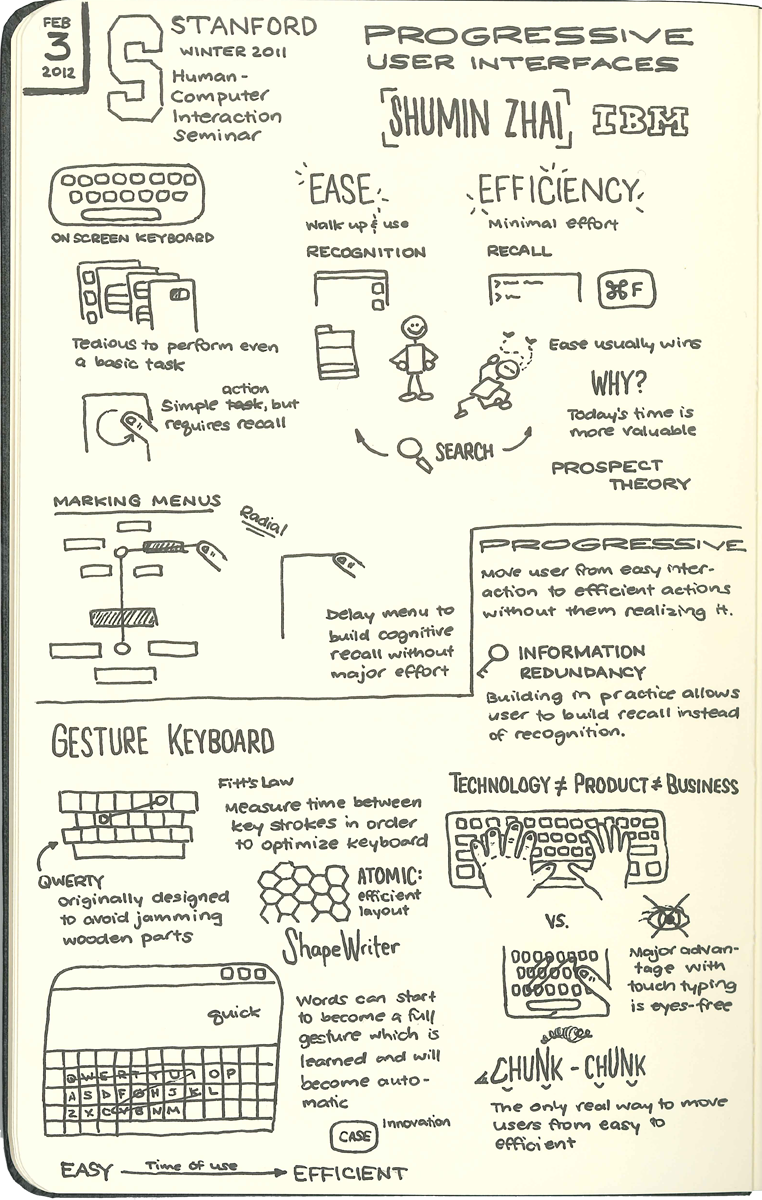Every once in a while, you make a discovery that makes you feel as if you have been living under a rock. For me, this happened last week as I discovered iTunes University. I had no idea that colleges and universities all over the country have been making premium learning available for free. Economics classes have always taught, “There ain’t no such thing as a free lunch,” but this proves them wrong! I found a seminar series from Stanford University on Human-Computer Interaction, so this will be the first in a ten-part series.
In this first installment, Dr. Shumin Zhai spoke on progressive user interfaces. He has been involved in the research and development of the gesture keyboard, an on-screen keyboard that allows for words to be drawn as a gesture instead of tapped out. The fundamental design principle that he discussed was the tension between ease and efficiency.
Ease refers to a design that allows a user to walk up to a new interface and use it without problem. It is a recognition task, so as a designer, you are building on what a user already already uses or intuitively knows. This is the principle behind the modern graphical user interface (GUI) that is largely responsible for the explosion of the personal computer.
Efficiency refers to a design that requires minimal effort. This is a recall task, so it relies on users learning the action to the point where they can perform it without instructions or scaffolding. This is embodied in the world of command-line computing where users can quickly perform tasks, but are required to independently remember the syntax required. A more everyday example of this design is keyboard shortcuts. Some people use these obsessively while most others never bother.
In the battle between ease and efficiency, ease almost always wins. This is mostly due to the fact that we typically value today’s time over that of tomorrow. So for a designer, the secret is to find a way to naturally move users from ease to efficiency. This is the task that Dr. Zhai set out to accomplish with the gesture keyboard, and he shared the principles behind this transition.
In order to move users from ease to efficiency, two things are required: information redundancy and chunking. Information redundancy basically means building in practice. Users have to perform the same actions over and over, and as they do, they can move from recognition to recall. Recall is much more efficient but also more cognitively demanding. With chunking, Dr. Zhai found that people learn things in chunks, not discrete items. So to have the greatest effect, the practice should be with chunks of information.
The great challenge for designers now is to explore ways to help users move from ease to efficiency in all different contexts. Sometimes it won’t be possible however, and in those cases, we need to design for users at both ends of the spectrum. As previously mentioned, ease almost always wins over efficiency, but it doesn’t have to completely replace efficiency.
Take a minute to look through my sketchnotes for more detail.


